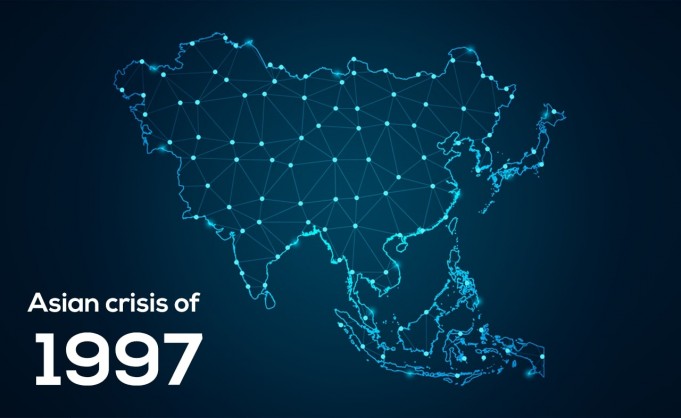The Asian Crisis of 1997
The Asian Crisis of 1997 is one of the most significant economic events in the history of Asia. This financial crisis gripped the majority of Eastern and Southeast Asia. This macroeconomic crisis was experienced by several different Asian economies. Thailand, South Korea, Malaysia, and the Philippines were some of the worst affected countries by the Asian crisis of 1997. Other countries that were affected by the crisis included Laos, Taiwan, Brunei, and mainland China. Japan was slightly affected by the Asian crisis of 1997, as well.
Causes of the Financial Crisis
A rise in foreign debt to GDP ratio
An enormous rise of 100%-167% of foreign debt to GDP ratio occurred from 1993 to 1996. These occurred in four of the largest ASEAN economies. Many investors came to the East, seeking a better rate of return.
Deficits in current account
Economies of countries like Thailand and Indonesia had enormous deficits in current accounts. This means that the imports of goods and services by these nations were more than that of their exports.
Semi-fixed, fixed exchange rates
Currencies were made vulnerable to speculation due to semi fixed and fixed exchange rates.
Financial deregulation
Financial deregulation started encouraging more loans. Furthermore, financial deregulation also stimulated the generation of asset bubbles.
Over-exuberance
Firms were encouraged to implement expansive borrowing because of the booming economy. International investors were encouraged to move into investment in these fast-growing economies. Implicit guarantees were very often provided by the government for private sectors, motivated by an intense desire for achieving economic growth.
The United States began to hike the interest rate in the late 1990s. This action was implemented to seek a reduction in inflationary pressure in the US. This consequently reduced the hot money flows to the East. As a result, Asian currencies began to fall. Asian economies struggled to keep up their exchange rates fixed with the United States.
On the July 2, 1997, Thailand was pressured to float its national currency. A rapid devaluation of currency occurred and it also triggered a loss of confidence among many Asian economies.
Intervention of International Monetary Fund (IMF)
International Monetary Fund intervened in this situation, trying to stabilize the economies of Asia. However, the intervention of the International Monetary Fund stirred up further controversies. Many argued that the intervention caused more harm to the economies. The devaluation of currencies could not be brought down by raising the interest rates in the Philippines and Indonesia.
These led to many Asian economies facing a severe recession. Consumer spending was also impacted due to the rise in the price of imports and imported raw materials. Countries such as South Korea, Indonesia, Thailand, and Malaysia were worst affected by the recession. A catastrophic fall of 84% in the GNP of Indonesia was recorded throughout June 1997 and July 1998.
The devaluation of currencies acted as a catalyst in a huge increase in import prices. As of now most of the Asian economies have recovered and are enjoying significant economic growth.









